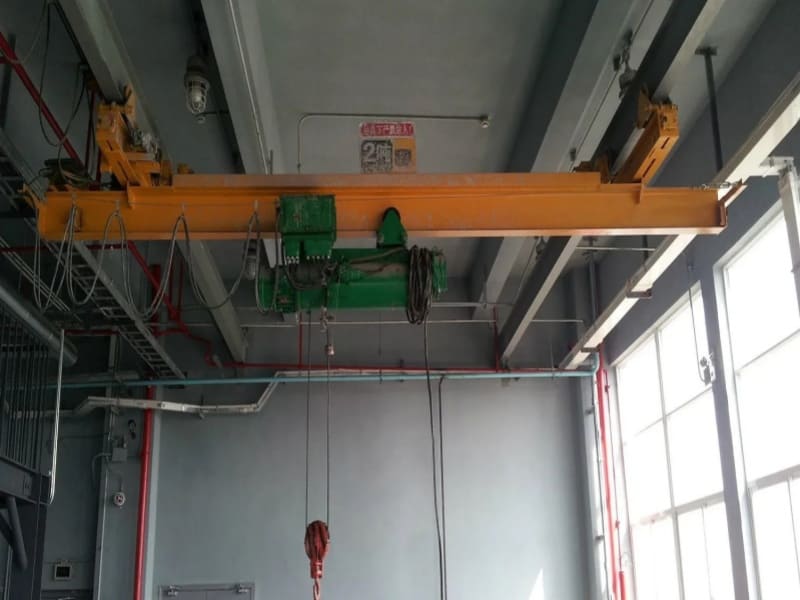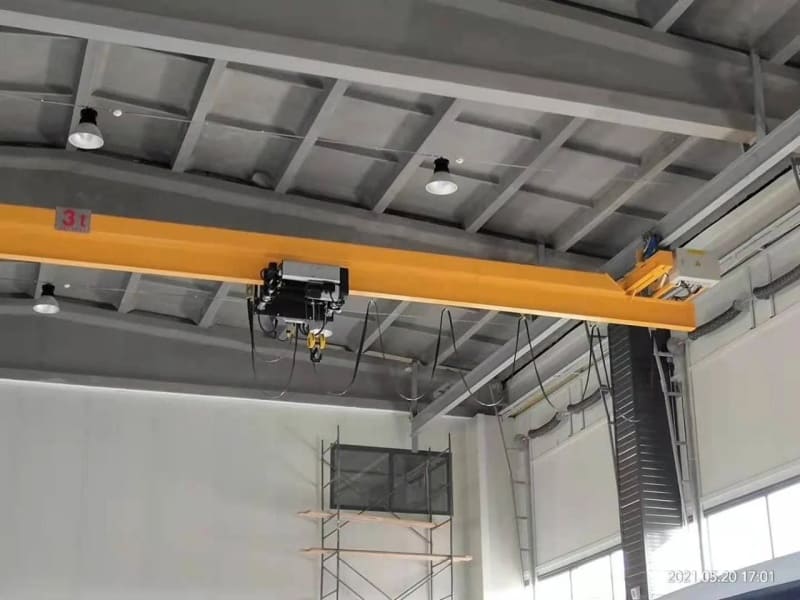The underhung bridge crane is an advanced lifting system specifically engineered for environments where space is limited or where top-running cranes cannot be installed. Unlike traditional cranes, it runs on the bottom flange of the runway beam, optimizing vertical clearance and making it ideal for low-ceiling facilities. This design allows the underhung bridge crane to move materials efficiently across production lines, assembly areas, and maintenance workshops. Built with a lightweight yet durable structure, it ensures smooth motion, minimal vibration, and long-term reliability. Its modular design also makes installation flexible and cost-effective, seamlessly integrating into existing infrastructure while delivering exceptional lifting precision and operational safety.
Main Components
♦Electric Hoist: The light duty bridge crane is equipped with a compact and efficient electric hoist that serves as the main lifting mechanism. It provides smooth vertical lifting and lowering operations with precise speed control. The hoist is fitted with safety brakes and overload protection to ensure safe and reliable performance during material handling.
♦Main Girder: The main girder forms the primary load-bearing structure of the light duty bridge crane. Made from high-strength steel, it ensures stability and rigidity while supporting the hoist and trolley system. Its lightweight yet durable design allows for easy installation and reduced building load.
♦End Carriage: The end carriage connects both ends of the main girder and enables the crane to travel smoothly along the runway beam. It is fitted with durable wheels and a drive motor system, ensuring quiet operation and precise movement across the working area.
♦Control Panel: The control panel integrates advanced electrical components that coordinate all crane motions. It features overload protection, circuit breakers, and emergency stop functions, enhancing operational safety and reliability.
♦Safety Protection Functions: To ensure safe operation, the light duty bridge crane includes multiple safety systems such as limit switches, emergency stop buttons, and thermal overload protection, preventing accidents and equipment damage.
♦Controls: The crane can be operated via a pendant control or wireless remote control, giving operators flexibility, convenience, and improved visibility for precise load positioning.
Advantages
♦Space Optimization: The underhung bridge crane is specifically engineered for facilities with limited headroom. Its compact design minimizes overhead space requirements, making it ideal for workshops, warehouses, and production lines with height restrictions.
♦Easy Maintenance Access: Maintenance and inspection are made effortless thanks to catwalk-mounted controls and strategically placed components. This design enhances safety and reduces downtime during routine servicing.
♦Seamless Structural Integration: The underhung bridge crane can be easily integrated into existing building structures without requiring additional support columns, reducing installation complexity and costs.
♦Durable Construction for Continuous Use: Built with robust steel structures and precision-engineered components, it guarantees maximum uptime even under heavy-duty industrial conditions.
♦Low Headroom and Wide Span Options: Its ultra-low headroom design ensures efficient use of vertical space, while extended span and lifting capacity options allow it to serve larger work areas efficiently.
♦Efficient and Reliable Operation: Equipped with modular components such as brakes, motors, and control systems, the crane allows for quick servicing and reduced maintenance costs.
♦High Performance and Productivity: With faster travel speeds and a high-duty cycle, the underhung bridge crane delivers superior handling efficiency, meeting the demands of modern material handling environments.









